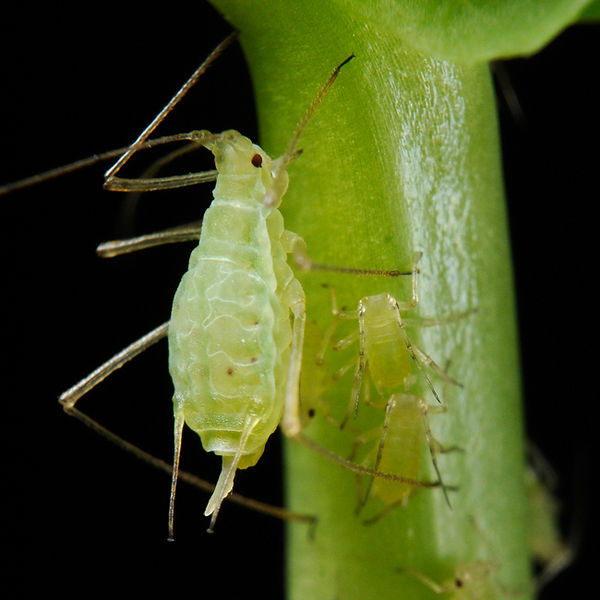Strange insects know photosynthesis like trees
A tiny insect commonly known as aphid may be one of the few animals that can turn sunlight into energy like a tree.
According to Live Science, scientists have discovered evidence that aphid has a scientific name, Acyrthosiphon pisum, that captures light to produce adenosine triphosphate (ATP) - a chemical present in the world. Live cells are used to store and metabolize energy.
Normally, for animals, cells convert energy from food into ATP, while plants produce ATP through photosynthesis.

Aphid Acyrthosiphon pisum has the ability to photosynthesize like trees. (Photo: Live Science)
The aphids are the distinct elements in the animal kingdom, because they can make carotenoids themselves - pigments often produced by plants, fungi and microorganisms and can turn into antioxidants for human body after being absorbed.
Previous studies have found that aphids have the ability to produce such pigments after exchanging genes with fungi. The new study found that these carotenoids can help this insect become photosynthetic as plants of aphids.
Carotenoids also contribute to the body color of aphids. A French research group from Sophia Agricultural Technology Institute discovered, the production of carotenoids in beetles, and therefore their body color, depending on environmental conditions.
Cold bed bugs often produce large amounts of carotenoids and are green, while the best conditions lead to the emergence of orange aphids, which characterizes medium carotenoid levels. White bed bugs with non-pigmented bodies often appear when large beetle communities face limited food sources.
When the researchers measured ATP levels in all three groups, they found that the blue group produced significantly greater amounts of ATP than the white group. In addition, orange bugs produce more ATP when exposed to sunlight than when placed in the dark.
In the recently published article in Scientific Reports, the team stated that a more thorough examination was needed to verify the findings as well as to find out why these resin-sucking organisms need to be created. generate energy from light.
- Photosynthesis method helps agriculture develop
- New finding: 'Reverse photosynthesis' helps reduce pollution
- Successfully developed compounds that absorb CO2 faster than trees
- Gorgeous insects ...
- Develop simple, cheap materials for 'artificial photosynthesis'
- Strange insects attack sweet potatoes
- It feels like a person who is infested with insects: strange disease makes many people miserable
- Plant-derived technology will be the solution to a clean energy problem
- Photochemical photosynthesis like leaves
- 'Glimpse' strange monsters exist on Earth
- Top 10 weird insects
- Newly discovered insects
 Why do potatoes have eyes?
Why do potatoes have eyes? 'Tragedy' the world's largest carnivorous life: Death becomes ... public toilet
'Tragedy' the world's largest carnivorous life: Death becomes ... public toilet Tomatoes were once considered 'poisonous' for 200 years
Tomatoes were once considered 'poisonous' for 200 years Detecting microscopic parasites on human face
Detecting microscopic parasites on human face Worms 'fireflies' are created in the laboratory
Worms 'fireflies' are created in the laboratory  Find a more individual Hoan Kiem turtle in the wild
Find a more individual Hoan Kiem turtle in the wild 